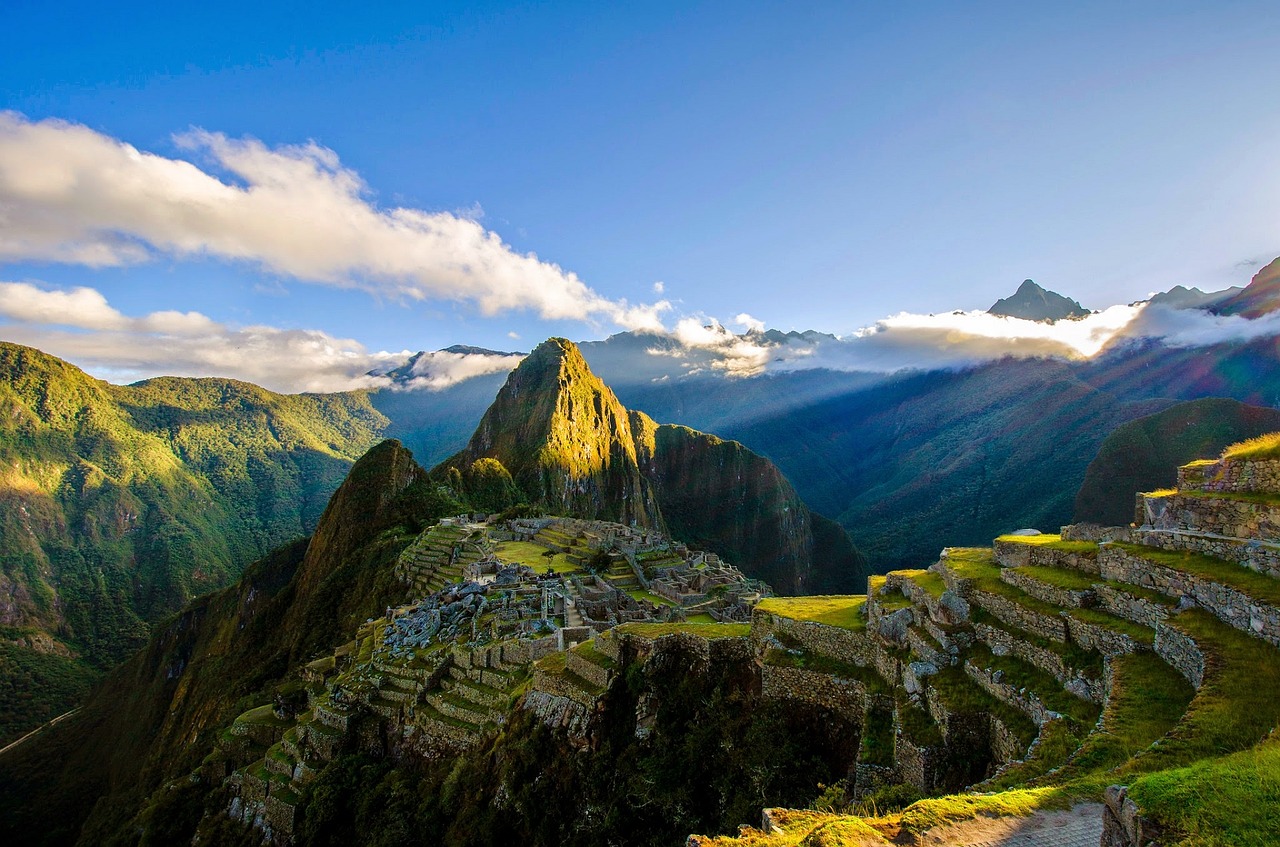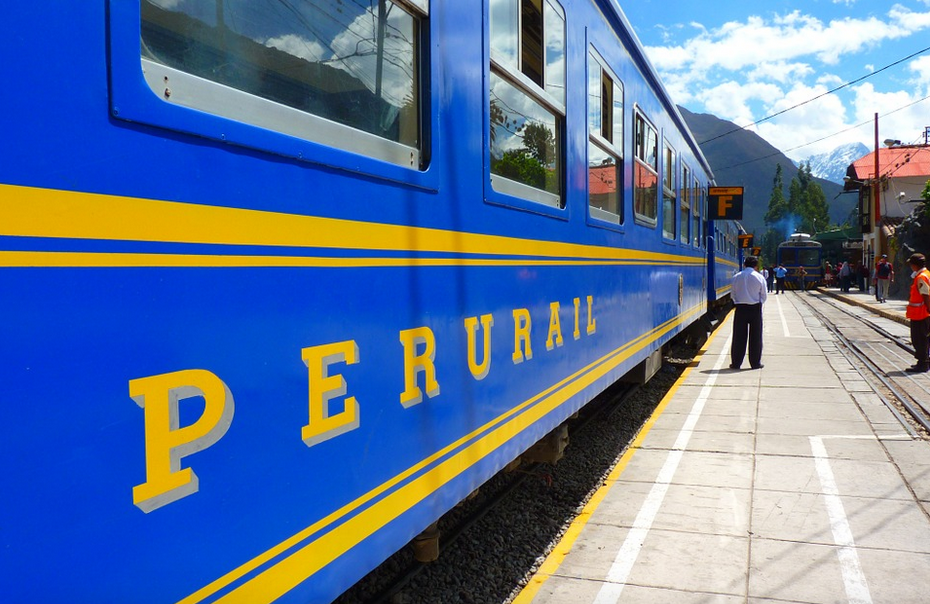Purported to be two of the most expensive rail and bus routes per kilometer in the world, the train and bus succession which transports the 1.3 million tourists to Machu Picchu every year has been controlled by a government-granted monopoly for much of the last two decades.
Fertransa, the private owner of the 30 km railway track between Ollantaytambo and Aguas Calientes, maintained a total monopoly on the route from 1999 until 2009, when its competitor, Inca Rail, finally gained access to the market. The 4.7 km route between Aguas Calientes, the small town at the base of Machu Picchu Mountain, and the Historic Sanctuary of Machu Picchu remains solely owned by the consortium Consettur.

Designated as a UNESCO World Heritage Site in 1983, Machu Picchu is remotely situated on a mountain ridge 2,430 meters (7,970 ft) above sea level in the heart of the Sacred Valley—a region approximately 80 kilometers (50 miles) northwest of Cuzco. Its isolation, which undoubtedly made it appealing to the Incas who inhabited it in the late 1400s, has today made it susceptible to exploitative transport companies eager to cash in on the multi-million dollar tourism market. There is no public road access beyond the town of Ollantaytambo, which means that the only way to traverse the final 40 kilometers through the Urubamba canyon is the monopolized train-bus route, or a four-day hike along the Inca Trail.
The most basic fare available to foreigners for the 1 ½ hour train ride is US$65, or US$130 roundtrip, an objectively outrageous sum for such a short distance. The bus company, for which one might need to queue up to 2 hours, charges foreigners US$24 for the 9.6 km round-trip journey between Aguas Calientes and Machu Picchu. So how did two—now three with the inclusion of Inca Rail— private companies gain such privileged access to a globally recognized historical monument?
Fujimorism
The train and bus monopolies, like those in many industries across Peru, are a product of the right wing economic reforms implemented by Alberto Fujimori during the 1990s. President Fujimori was an underdog candidate who unexpectedly won the bid for presidency in 1990. Born to poor Japanese immigrants, he was schooled in agricultural engineering and served for a time as Chancellor of Peru’s National Agriculture University. He ran on a campaign of change (literally: “Cambio ’90”), fueled by Peru’s failing economy and a left-wing domestic terrorism group known as the Shining Path.
Fujimori’s presidency followed in the wake of the 1989 Washington Consensus, which outlined ten economic policies promoted by the IMF, World Bank, and other Washington-based institutions for the development of crisis-ridden Southeast Asian and Latin American countries. Fujimori endorsed one of these policies – privatization— as not only an economic solution but as a strategic foreign policy move. The latter became increasingly important after his 1992 “self-coup” (in which he shut down Congress, suspended the Constitution, and dismissed half of the Supreme Court) resulted in the immediate withdrawal of US$400 million in foreign capital and the termination of financial aid disbursement from many foreign governments and multilateral lending agencies.
As early as March 1991, Fujimori issued an executive order regulating the process of restructuring and downsizing of twenty-three PEs, or state-owned enterprises. The following September, he issued an order which created the Commission for the Promotion of Private Investment (COPRI), whose explicit mandate was the planning and execution of an ambitious divestiture program to be completed by the end of his first term in 1995. Later that same month, Peru signed the IMF-supported stabilization program, which held the country accountable to certain macroeconomic targets, many of which were thought to be best achieved through free-market reforms such as privatization.
Most expensive bus ride in the world
Despite the aggressive privatization plans set forth by Fujimori in 1992, the divestiture process was slow to mobilize and the touristic bus route of Aguas Calientes’ township was not put on the market until late 1995. The Tourism Promotion Fund (FOPTUR) was appointed the entity responsible for granting the two-year concession, with the only criteria being that the monthly payment made to authorities be at least US$2,000. FOPTUR received four proposals, two of which were dismissed due to incomplete information. Of the remaining two—Consettur Machupicchu S.A. 49 and Peru Hotel S.A—Consettur’s proposal was considered superior in all respects apart from its bidding price. It offered the government $3,000/month as opposed to its competitor’s $4,170/month.
In the time that has elapsed since it was awarded the concession, Consettur has been the subject of multiple complaint investigations. According to a 2017 report published by Peru’s National Institute for the Defense of Free Competition and the Protection of Intellectual Property (INDECOPI), the Association of Tourism Agencies of Cusco filed two complaints against Consettur— in 2001 and 2007— for price gouging. Though the complaints themselves never materialized in legal action, the investigation unearthed other violations committed by Consettur.
In its discussions with INDECOPI in 2001, Consettur claimed it had initially been granted a two-year contract that was extended in 1997 for an additional 10 years. In 2007, however, the consortium contradicted itself by arguing that its initial contract had been for 30 years. Consettur was unable to provide a convincing explanation for the opposing claims, and INDECOPI ruled in 2009 that the 30-year contract was illegitimate and levied a US$54,900 fine on the company.
The report continued that the three subsequent contract adjustments carried out in 1997, 2001, and 2002 were invalid, and that the maximum extension of the concession contract was March 2011. Furthermore, the 20-year road use agreement signed in July 2003 by the District Municipality of Machu Picchu and Consettur was declared unconstitutional, as it was concluded without any formal selection process, and by an authority without the competence to do so.
Given these findings, INDECOPI concluded that Consettur had no legal authority to operate on the Aguas Calientes—Machu Picchu route. It thus urged the Office of the Comptroller General of the Republic, The Commission for the Promotion of Private Investment (COPRI), and the Ministry of Foreign Trade and Tourism to implement or recommend measures within the scope of their powers to restore the conditions of competition in said road section.
Going forward, INDECOPI suggests that the route not be completely opened to competition due to environmental impact (the Urubamba canyon is prone to flooding and mudslides in the rainy season). It does, however, recommend that the bidding process be better regulated. Namely, that those organizing the process not be involved with any of the companies bidding and that the contest consider a more robust set of criteria, including price charged to end users, monthly payment to municipality, and the participation of local companies. As of the date of this article, however, Consettur still remains the only active operator on the 4.7 km road segment.
Attracting foreign capital, at what cost?
Privatization of Peru’s railway system was completed at an even later date than that of the bus route – not until the fall of 1999. The country’s three state-owned railways—the Central, Southern, and Southern Oriental—were combined for the concessionary bidding process. A 30-year concession contract was awarded to the Ferrocarriles del Peru consortium, which then split into two operators: Ferrovias Central Andina S.A., which services the central railroad, and Ferrocarril Transandino S.A., or Fertransa, which services the Southern and Southern Oriental railways, including the profitable Ollantaytambo-Aguas Calientes route. Selection was made based on bidding price, with the winning consortium agreeing to pay “33% of its revenues as principal retribution for the use of railways and complementary services, and 50% for its use of the State’s locomotives and wagons.” To run the service, Fertransa incorporated PeruRail, with whom it entered into a lease agreement for the use of all locomotives and rolling stock it had been awarded through the concession.

PeruRail is owned equally by Peruvian Trains & Railroads (PTV) and Belmond Ltd (previously Orient Express Hotels Ltd). Belmond, a luxury hotel group headquartered in London and incorporated in Bermuda, owns a collection of 46 hotels, trains, and river cruises across 24 countries. Its assets in Peru include two classes of train service to Aguas Calientes and six hotel properties, its most famous being the Belmond Sanctuary Lodge—the only hotel located at the entrance to Machu Picchu. Prices start at US$1,170 per night. In 2017, Belmond reported revenues of US$561 million, $63.2 million of which was derived from owned trains and cruises.
Belmond, also a 50% stakeholder in Fertransa, noted in its annual report that the concessionaire was denied its third of six allowable 5-year extension requests in December 2017. The report concluded that the remaining three extensions were improbable and therefore reduced its expectation of Fertransa’s concession life to 35 years, due to expire in 2034. It was noted, however, that Belmond’s stake in PeruRail was not anticipated to be impacted by the shortening of the Fertransa concession because the operator could continue to run trains after the expiration of Fertransa’s concession.
Obstruction of Justice
According to a World Bank report, the terms of the 1999 railway concession included a mandate that the concessionaire “guarantee the existence of at least one train operator, which could be a division of the concessionaire (operating under a different trade name) or an independent firm.” The concessionaire was also, however, “required to allow competing train operators access to its tracks,” which Fertransa delayed, through obstructive legislative action, until 2009.
To gain access to the market, a competitor is first required to submit its request to the Ministry of Transportation and Communication, demonstrating it meets the requirements of entry, after which it must obtain permission from Fertransa for use of the tracks. Fertransa, however, opposed the granting of operating permits wherever possible, citing reasons such as 1) deficiencies in the Management Contract 2) technical operator’s lack of experience in passenger transport, and 3) applicant’s failure to submit audited financial statements for each of the last five years.
Between 2007 and 2010, Fertransa appealed a total of four requests from Andean Railways, four requests from Wyoming Railways, and two requests from Inca Rail. Over this period, Fertransa was the subject of several INDECOPI investigations. In July 2007, for example, INDECOPI published a resolution ordering an end to Fertransa’s unjustified refusal to rent the tract and rolling material it had been granted in its 1999 concession. Fertransa was also found guilty of ignoring a decree approved in 2005, which ordered it to reduce prohibitive legal requirements for competing rail transport services to obtain operating permits. On May 7, 2008, the Association of Railway Operators of Peru (Apofer) denounced Fertransa, PeruRail, Peruval, and PTR for abusing its dominant position in the market through abusive legal action, including predatory processes aimed at preventing, delaying, and increasing costs of entry for competing operators.

In February 2009, INDECOPI launched a 15-month investigation into Fertransa’s anti-competitive practices. The investigation culminated in its May 3, 2010, decision to levy an US$800,000 fine on the consortium, based on the “profits that PeruRail has achieved or managed to maintain by delaying the entry of potential competitors to the railway transport market.” In calculating the fine, INDECOPI considered the start of Fertransa’s anti-competitive behavior to be the date on which the first legal action was filed by defendants, which was November 2004. The end date of anti-competitive practices would theoretically then be the date on which the first commercial operation was carried out by Fertransa’s first incoming competitor, which in this case was Inca Rail in September 2009. Accounting for Inca Rail’s 16-month mobilization period, the anticompetitive restriction was therefore ruled to be 43 months.
Unfortunately, this ruling was handed down almost eight years ago, with little change seen since then. PeruRail and Inca Rail are still the only operators servicing the Ollantaytambo – Aguas Calientes route, with Fertransa’s concession rights not expiring until 2034.
Implications
The economic implications of possessing the commercial transport rights to such a highly visited site are enormous. In 2017, The Guardian reported that the number of tourists visiting Machu Picchu reached 1.4 million in 2016—up 68% from 2011. In the 2016 summer season, the site experienced an average of 5,000 people per day, double the 2,500 visitors per day recommended by UNESCO. To control the influx of visitors and appease UNESCO’s growing concerns, Peru recently instituted a timed entry ticketing system, whereby tourists are required to choose between a morning slot (6am-noon) or an afternoon slot (noon-5:30pm). Anyone wishing to stay longer is required to purchase tickets to both. The number of visitors will be capped at 3,267 in morning and 2,673 in afternoon, for a total of 5,940/day or 2.2 million/year, making it questionable as to whether the new regulations are controlling the flood of visitors or simply creating increased capacity for the future.
Of the 1.4 million visitors to the site every year, roughly 73,000 are allowed entry to the Inca Trail (200 trekkers/day), the remaining 1.3 million having no option but to pay the train and bus fare. This represents an enormous market share for the current concessionaires and unmet economic potential for the people of Peru. The government’s decision to award the railway concession to a foreign-owned corporation represents a tremendous loss of tax revenue. It also contributes to economic leakage in a country which could greatly benefit from the foreign currency, particularly as its people and lands bear the brunt of the environmental and cultural destruction associated with overtourism. If both rail and bus concessions were awarded to locally-owned companies as recommended by INDECOPI, Peruvians could see a greater share of the profits from tourism being reinvested in their communities. Aren’t they, after all, the people most rightfully in place to profit from this piece of history?
Read Ethical Traveler's Reprint Policy.
